For the sixth edition of Art in Focus by Rockefeller Center and Art Production Fund, an installation by the artist Melissa Joseph is on view through April 19. For her first-ever public art exhibition, Joseph gives viewers a look into her unique creative process, which involves felting, compressing, blending, and bonding wool fibers together to create panels centered on storytelling. Exploring questions of inclusivity, visibility for underrepresented voices, and the in-between spaces of her cultural heritage and diaspora, Joseph’s heartfelt work is a personal reflection of the people and moments she has deep connections to.
Whitewall spoke with the artist about her installation on view, and how she hopes her work prevents future generations from inheriting injustice.
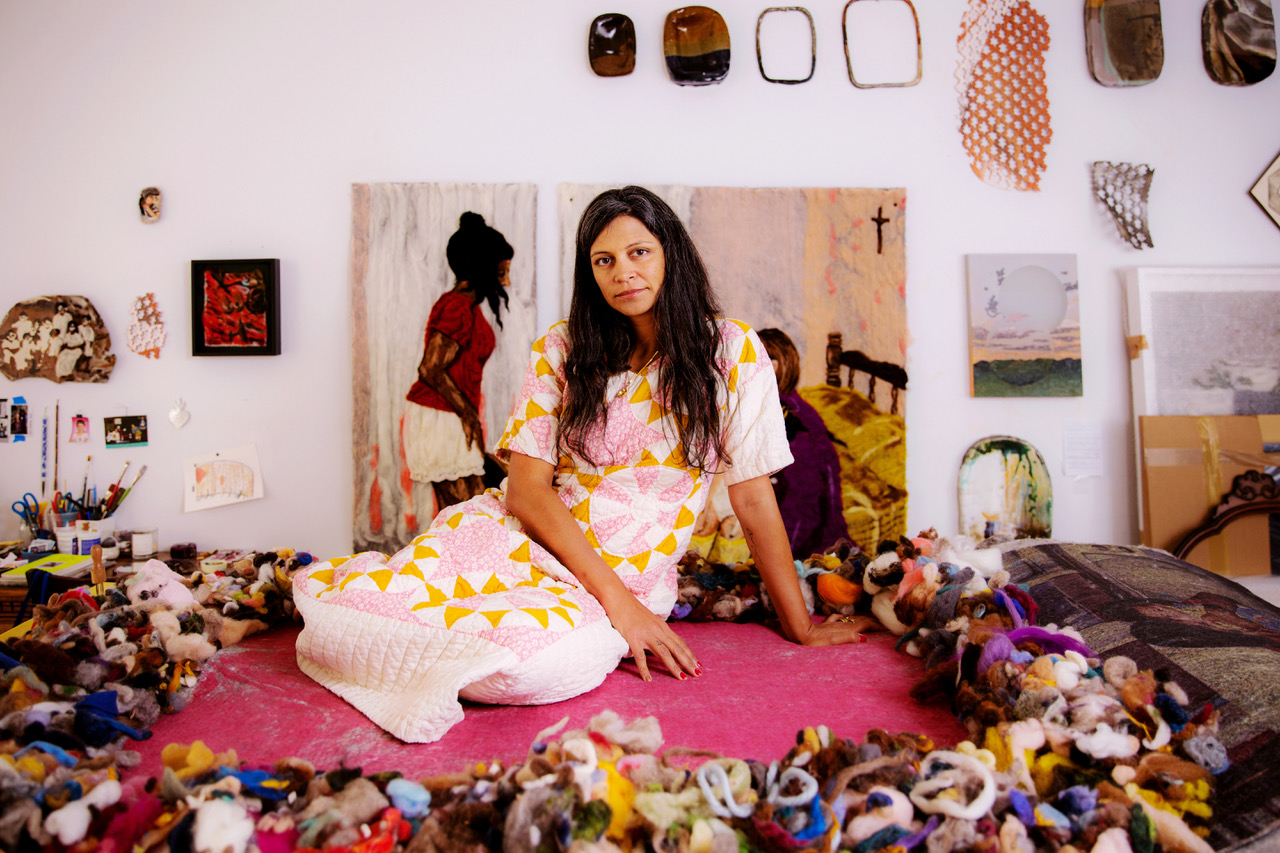
Photo by Mary Kang, courtesy of Melissa Joseph.
Artist Melissa Joseph Uses Felting as Storytelling
WHITEWALL: How did your signature creative process—felting, compressing, blending, and bonding wool fibers—come to be?
MELISSA JOSEPH: Felting is the oldest way of making textiles. It has a beautiful history of community, agriculture and the deep intrinsic human need to create both for functional and for aesthetic purposes. I began by wet felting, and have now shifted to needle felting, a much newer process, in which you use barbed needles to embed wool fibers into a surface. Wet felting takes advantage of the scaled structure of the wool fibers to bind them together through agitation and moisture. Both ways are very intuitive and soothing for me, and so I am very glad to have found it!
WW: What was your first artwork?
MJ: My first felt was an abstract wet felt, just to see if I could make the fibers stay together. But pretty quickly I wondered if I could use the fibers to make an image, and the first felt I made with an image was of my aunts in India.
WW: We’ve seen your work appear in group shows at several art fairs and are always impressed by your ability to craft intimate narratives with wool. Why is this material important to your work?
MJ: I think what people respond to most in my work is my feelings about the subject matter. I can only make images of people and moments I have deep love and connection to, and I hope this comes through the work to the viewer and they can feel it too. Wool and textiles in general are perfect for holding these intimate moments because they are body referential. We associate textiles with our bodies and softness much of the time. When I use materials other than textiles, I am drawn to them because of the stories that they carry and join with my stories. Whether it’s a found industrial object or clay or wood, each has a very long history of its own that becomes part of a new conversation in the work.
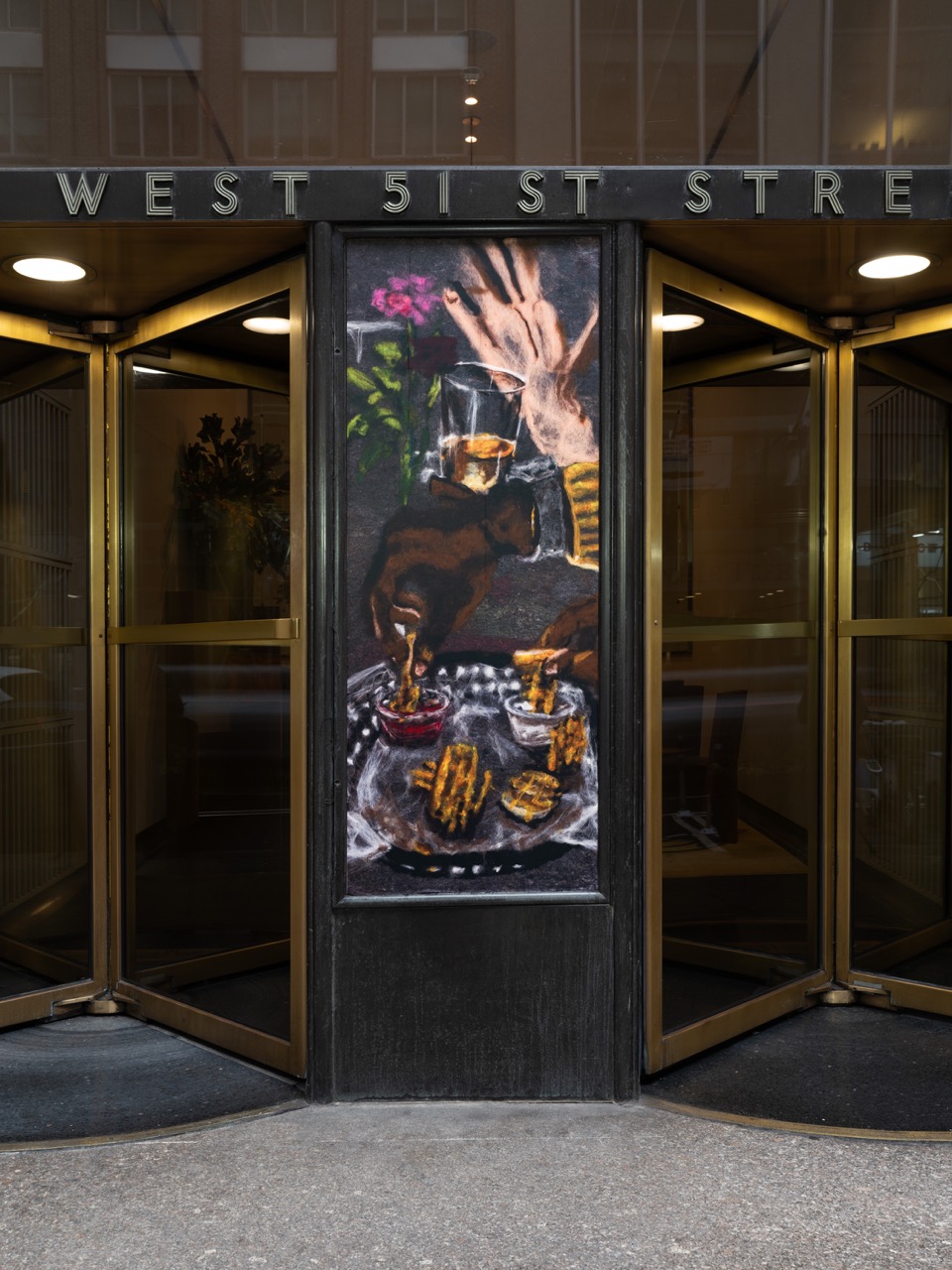
Photo by Daniel Greer. Courtesy of Art Production Fund.
Exploring Race and Cultural Heritage with Art Production Fund
WW: Your exhibition with Art Production Fund at Rockefeller Center is centered around visibility for underrepresented voices. Why is this topic especially important for you to create artworks around, especially right now?
MJ: I think this topic will alway be important. There has been some progress to increase the visibility of people of color and women in the arts, but even as we take steps forward, we take steps back. Many DEI positions in museums have been cut in the last year, and the statistics for collections and gallery rosters are still very uneven despite women and POC making up a global majority. Personally, I didn’t even recognize the impact of not seeing myself represented in these spaces until I was an adult. That is how insidious and accepted these inequalities are. We think they are normal. If there is any way to prevent future generations experiencing and inheriting that trauma, I would love to work toward it.
Another topic that is even more pressing (if that’s possible) at the moment is the immense conflict and suffering in the world, both in actual wars, but also within communities. I wish everyday for a ceasefire and for peace. Witnessing so much brutality in real time is paralyzing and I mostly feel helpless. In this project I hoped to put images of tenderness and love and care on display, offering even brief moments of solace or comfort for those passing by.
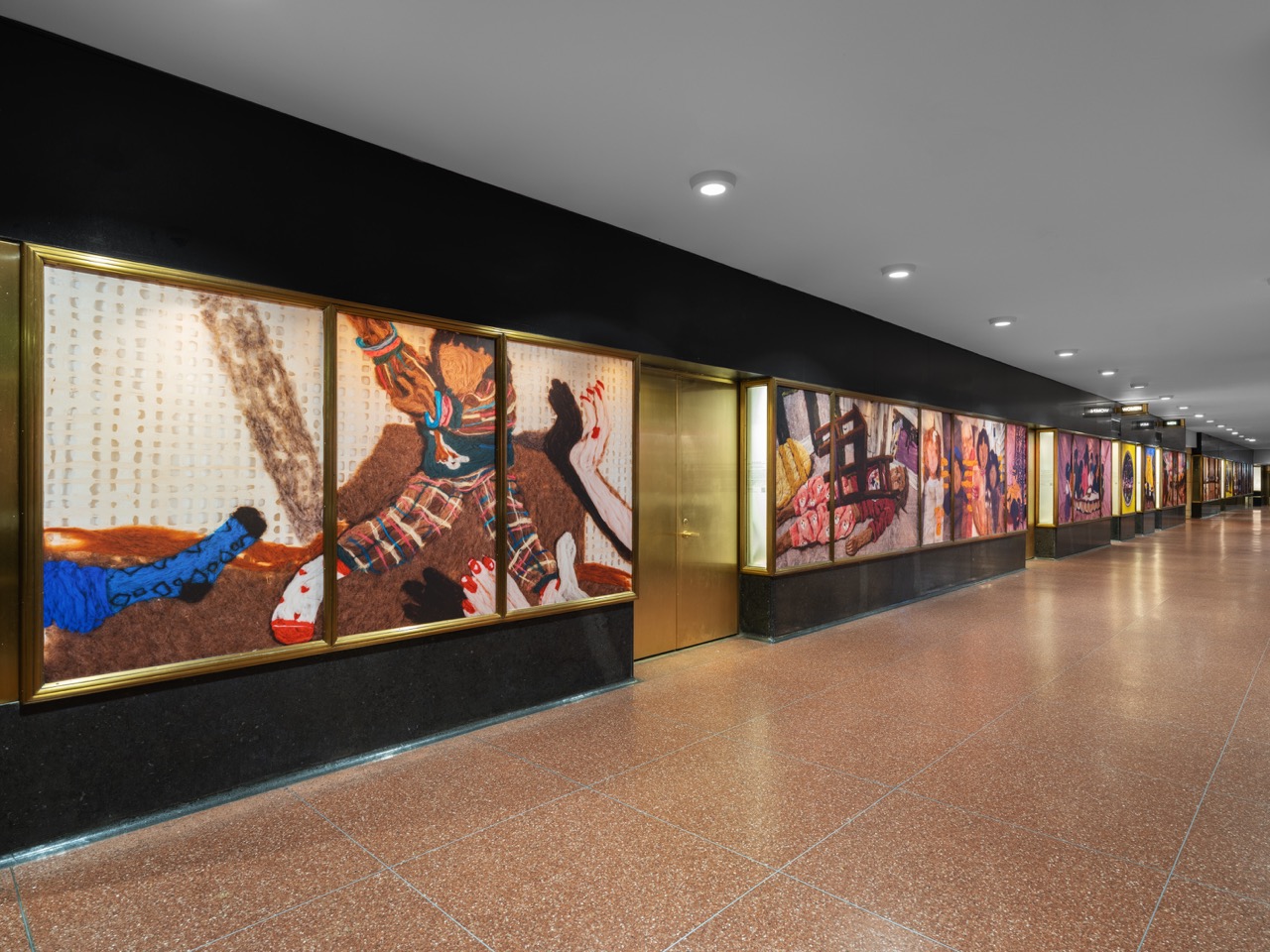
Photo by Daniel Greer. Courtesy of Art Production Fund.
WW: How does what you’re presenting facilitate that narrative?
MJ: My work shows both South Asian, Diasporic, and mixed race families doing quotidian things. What becomes evident through the entire body of work is how much we all share experientially. There are universal understandings of diaspora.
WW: The presentation illustrates your personal journey as a bi-racial woman who’s navigating the in-between spaces of cultural heritage. Can you share a bit about that journey and what it means for you to express its “in-between” here? And through art?
MJ: I am at the intersection of many cultural identities, but so is everyone! Some that I really feel daily are the spaces between being both Indian and American, Brown and White (which is not the same as Indian and American), rural and cosmopolitan, digital and analog, young and old. Some are visible and some are invisible which impacts how people perceive us, but not always accurately how we feel. There is endless code-switching that we do, sometimes consciously sometimes unconsciously, and these plural ways of being and seeing seep into my work in the way I use and combine materials. I tend to use materials in untraditional ways, I push form and create new languages that feel representative of my experience. I mix things together that wouldn’t normally be together and try to make them feel whole and unified. It is rewarding to know that even if there aren’t words for what I am trying to express, there is a visual vocabulary. One I think of as poetry versus prose.
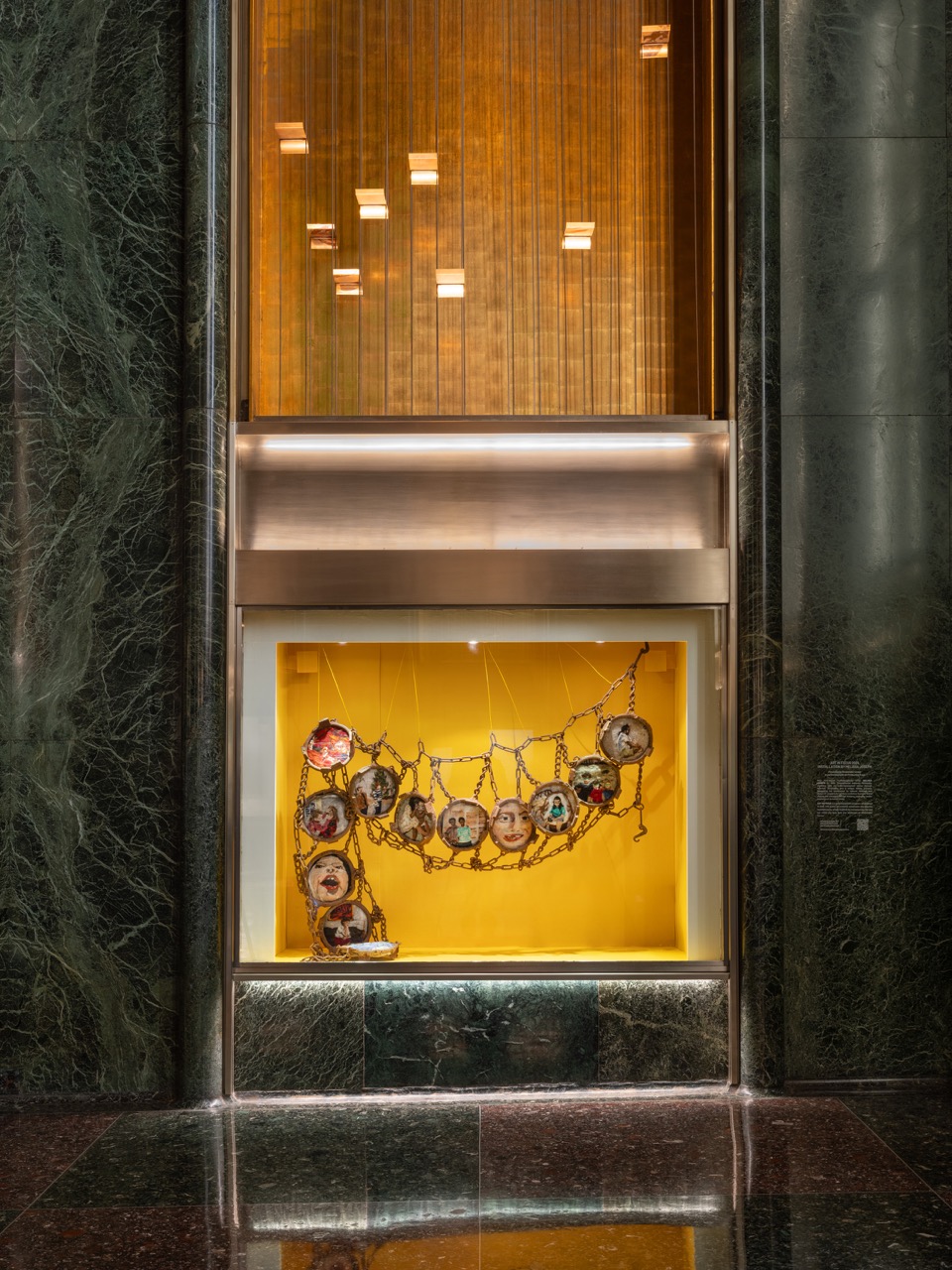
Photo by Daniel Greer. Courtesy of Art Production Fund.
Bolding Taking Up Space at Rockefeller Center
WW: Is this your first public work? If so, please tell us how it feels to experience your work in this way, out of a gallery setting.
MJ: This is my first public work! Screens mediate so much about how we interact with space now, and I didn’t realize until I was in the actual space of Rockefeller Center, seeing my family so boldly taking up space in this historical place, a place where millions of people pass through on their way to work, shows, or other events, how emotional it would be. I teared up when I saw the long concourse, actually. What an immense honor and privilege to share my work and my stories, and to bring my ancestors there.
WW: Tell us about your Art Sundae event happening this spring.
MJ: I am always excited to share my love of needlefelting with others! For the Art Sundae event, we will do a workshop where the kids can create their own needle-felted designs and then we will incorporate them into a collaborative installation in Rockefeller Plaza.
WW: What else are you working on now?
MJ: I am currently at a residency in San Antonio, Texas called Artpace. It’s a magical place and I am working alongside two fantastic artists selected by Larry Ossei Mensah, Patrick Quarm, and José Villalobos. We are each creating a solo installation that will be on view from March 28–May 19. It’s such a gift to have the time and space to create away from the frenetic pace of NYC. I am working on an installation that ties my family archive to some found objects here in San Antonio. For instance, both my hometown in Pennsylvania and San Antonio were settled by German immigrants in the 1800s leading to the development of beer brewing culture that still exists today in both places.
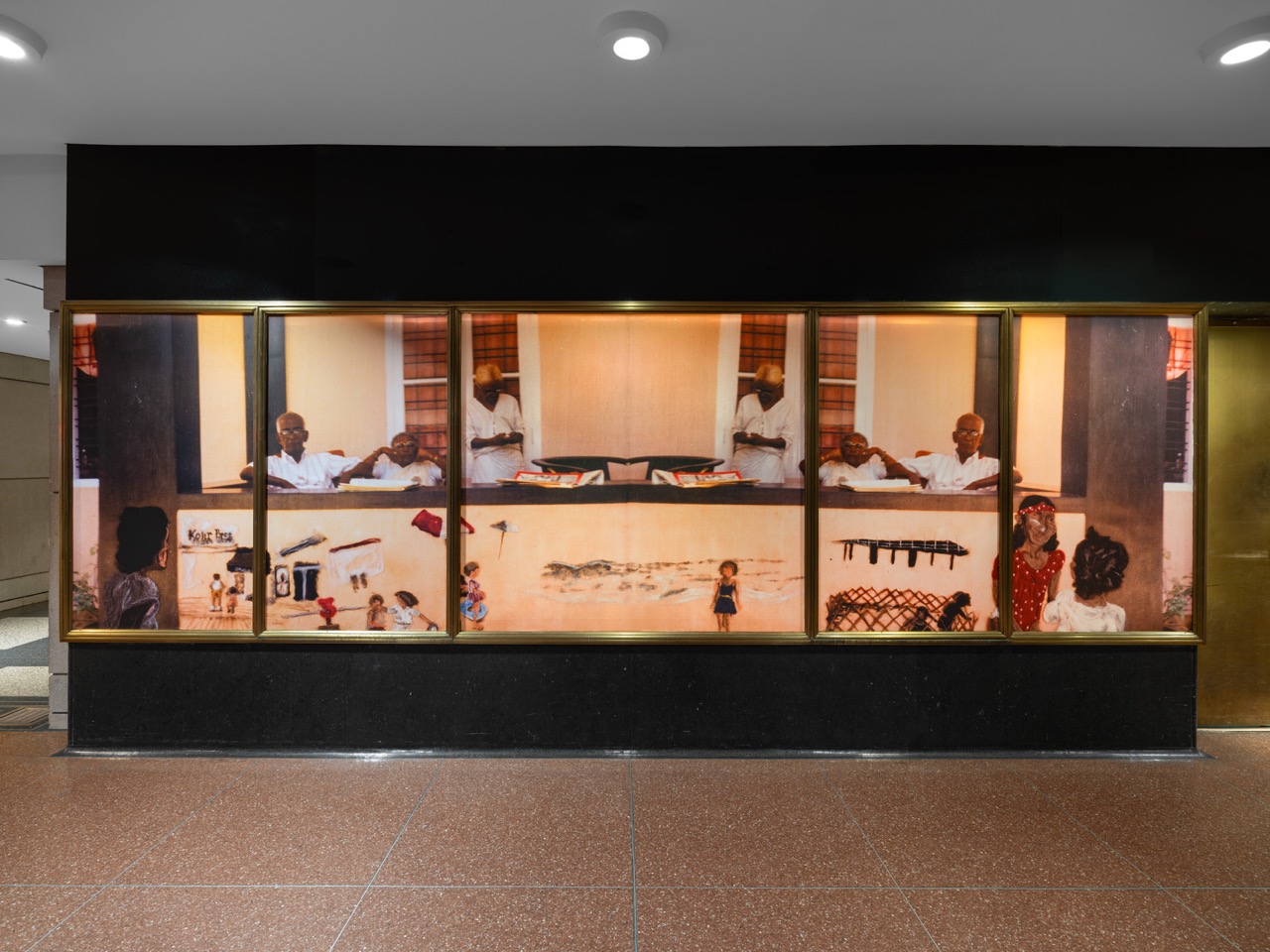
Photo by Daniel Greer. Courtesy of Art Production Fund.








